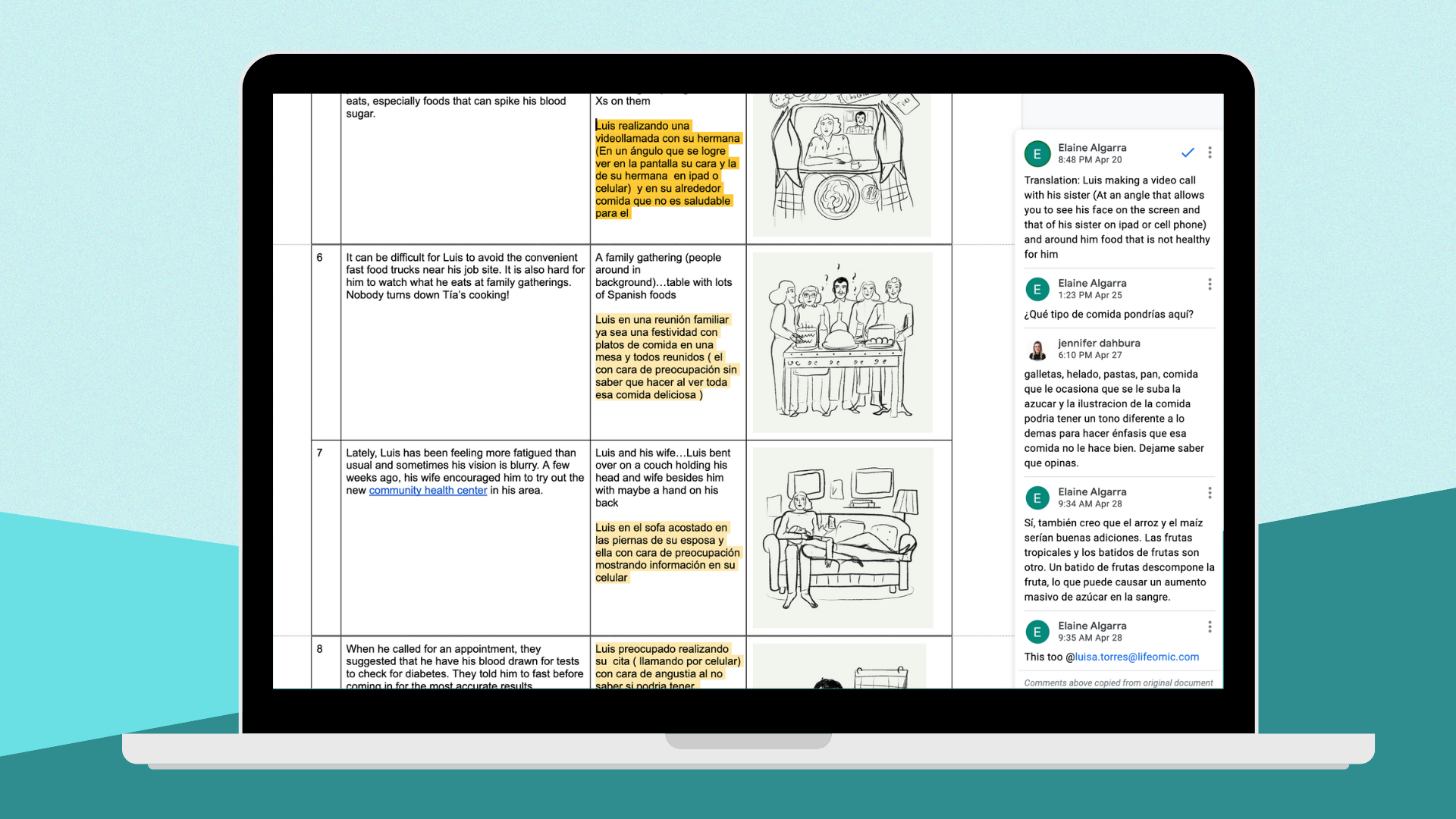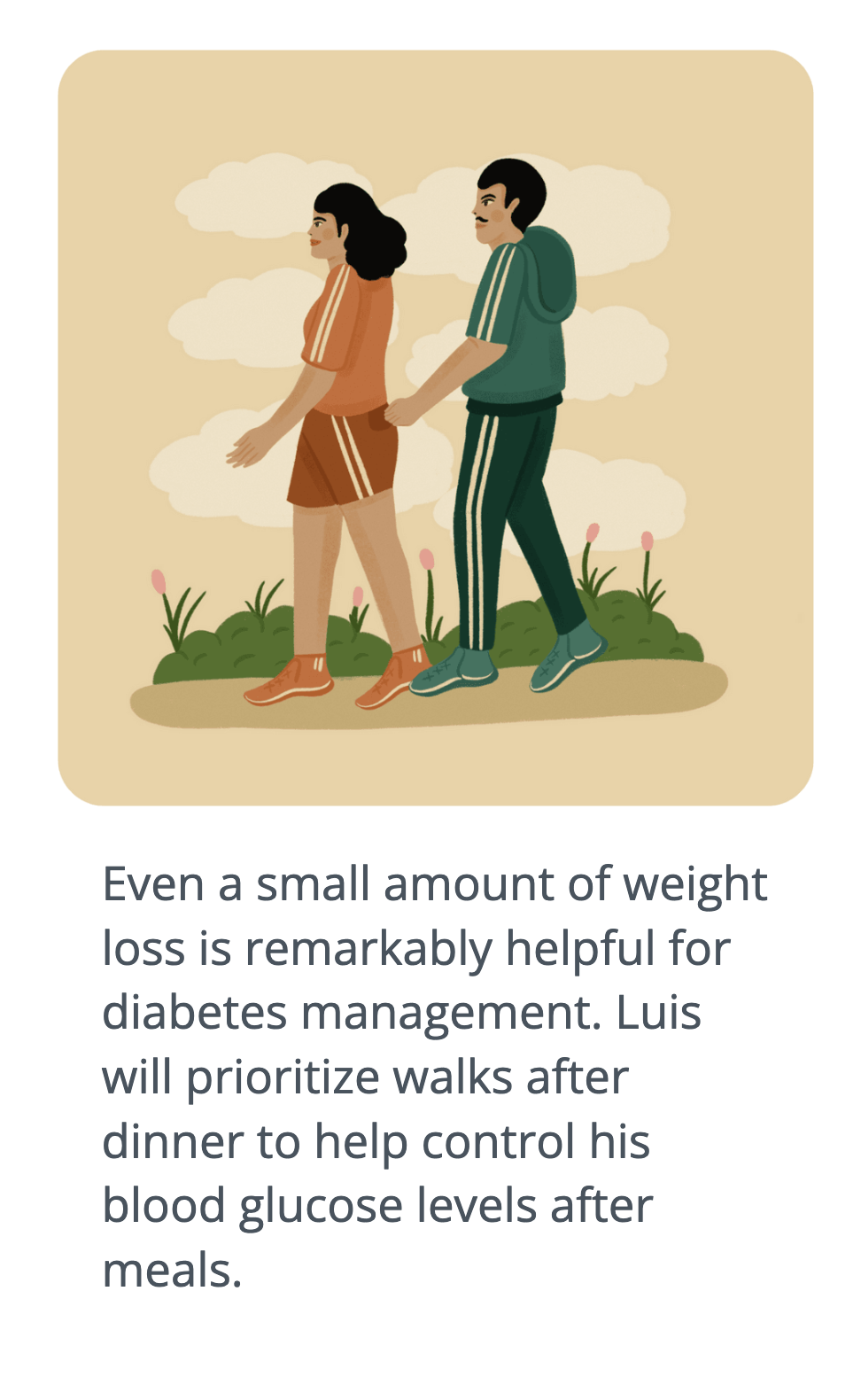The Lifeology Team has added a new course about type 2 diabetes to our existing course library of science, health and science communication courses. We follow Luis as he receives his diagnosis, learns more about what it means, and makes lifestyle changes.
In the United States, 37.3 million people have diabetes. Of those people, 8.5 million are undiagnosed. Over their lifetime, US adults have a 40% chance of developing type 2 diabetes. Hispanic or Latino adults have a 50% or greater chance.
Hispanic people make up a diverse group that includes people of Cuban, Mexican, Puerto Rican, South and Central American, and other Spanish cultures, and all races. This group is more likely to have type 2 diabetes (17%) than non-Hispanic white people (8%).
Therefore, it was important to us to center “Introduction to Type 2 Diabetes” around a Hispanic character named Luis. Luis is a hardworking family man who tries not to go to the doctor unless he has to. Not only is going to the doctor expensive but Luis doesn’t know the importance of preventative care; to no fault of his own, Luis doesn’t have access to good health information.
However, Luis’ wife encourages him to go see a physician at a community health center after experiencing some symptoms. In the course, walk through Luis’ experience at the doctor before finding out he has type 2 diabetes.
Before Luis can have a longer conversation about management with his doctor, he ends up running into his cousin Reina who is a dietician. Luis starts asking Reina questions. Reina is a wealth of knowledge who explains to Luis what is happening inside his body. Check out the course to learn more about how the body manages blood sugar, what insulin resistance is and what is happening inside the body when one is diagnosed with type 2 diabetes.
Next, Luis talks to his doctor about his management. With encouragement from Reina and support from his family, Luis is optimistic about his future. He learns how important it is to manage his diabetes now to help keep healthcare costs down as well as maintain an overall healthy being! Learn more about Luis’ first steps toward a healthier lifestyle in the course.
The Collaboration
At Lifeology, we believe that collaboration is key. This course was no different. Without the efforts of the group of people below, the course would not have turned out the way that it did. We not only needed writing, illustrating and reviewing, but we also needed translating between creators! Continue reading to learn more about each of the collaborators and how we communicated with our artist, Jennifer Dahbura, who prefers to speak in Spanish!
Courtney Adams is a science writer on the Lifeology team. She also teaches science writing to college students at Texas A&M University. Courtney wrote the script for this course.
Jennifer Dahbura is a freelance illustrator from El Salvador, Central America. Jennifer brought this course to life with her beautiful, detailed illustrations.
Shelagh Fraser, MD is LifeOmic’s Chief Medical Officer. She is also a practicing physician. Shelagh reviewed this course for scientific accuracy.
Elaine Algarra is Lifeology’s Communication Manager and a certified K-12 educator. Elaine was integral in back-and-forth communication with Jennifer, often using a translation tool to make sure all parties were on the same page. She also gave feedback throughout the storyboard process and was a helpful reviewer for the suitability of this course for our intended audience.
Luisa Torres is LifeOmic’s Science Communication Manager. She is a neuroscientist and science writer. Luisa translated in-person meetings between the team and Jennifer as well as provided the translations for the Spanish version of the course.

A screenshot of part of the storyboard document from “Introduction to Type 2 Diabetes,” which contains back-and-forth collaboration between creators.
The collaborative process began before the script was written. Lifeology team members got together and brainstormed ideas about the content of the course. They began researching statistics and gathering resources.
The outline was then carefully crafted into a story-driven narrative by Courtney and sent for review. Several iterations of the script were made before it was finalized. With Elaine’s help, the script was changed into a storyboard where Courtney was able to leave visual notes for the artist.
The team wanted a Hispanic artist to illustrate the course, so Elaine did some online research and came across Jennifer’s portfolio and reached out.
“In March I reached out to El Salvadoran artist Jennifer Dahbura after viewing her work on her website. I was drawn to her use of color, shape and pattern and thought she would be an excellent artist for the course.” – Elaine
A meeting with Jennifer was set up and the Lifeology team. Luisa played an integral part in translating information between both parties during the meeting and throughout the storyboard process. Non-Spanish-speaking team members used a translation tool to communicate—sometimes it worked and sometimes it did not! It was a great learning experience for all involved.










